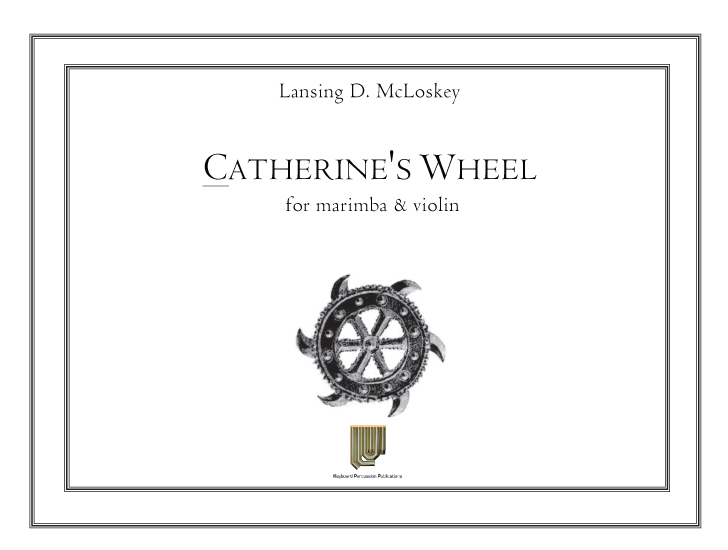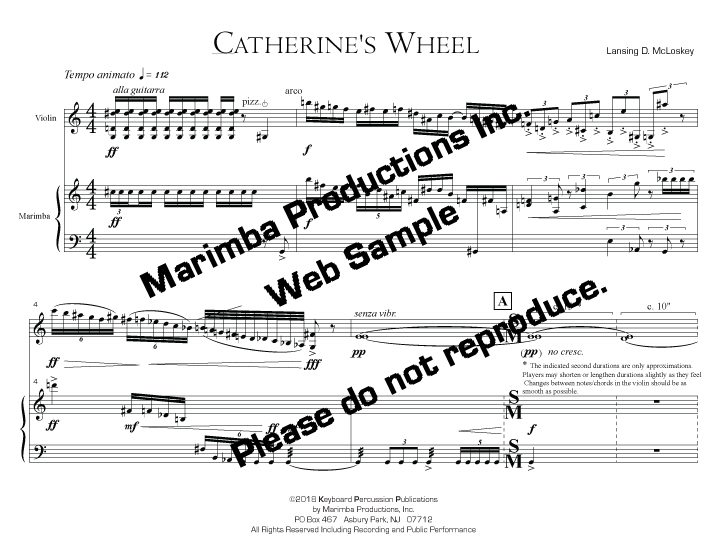Commissioned for marimbist Eduardo Leandro and violinist Yeon-Su Kim, this duet for marimba and violin pays tribute to Saint Catherine, one of the most popular saints in the Middle Ages. Catherine’s Wheel quotes several pieces of music about St. Catherine, including Gregorian chant melodies, the hymn “Faith Of Our Fathers” and Gaude Virgo Katherina by 15th century English composer John Dunstable.
“Catherine’s Wheel” is a work that has many intriguing moments throughout its 15-minute length. Each moment feels like a snippet in time that exclusively calls your attention as if all the previous moments had never existed, making this piece an interesting addition to a repertoire steadily paved by the legacy of Marimolin.
“Catherine’s Wheel” is written for marimba and violin and requires considerable four-mallet technique as well as extended techniques for the violin. It is laid out as a through-composed work that explores timbre in drastic ways within the violin, but it is far more reserved in its timbrel approaches to the marimba sticking to normal play areas and sound production techniques.
Lansing D. McLoskey manages to integrate the violin and marimba quite successfully at the outset with the two instruments continuously at odds, often creating polyrhythmic and polytonal textures that are full of harmonic surprises. However, in measure 79 the piece shifts entirely in character to a haunting, modal, chant-like melody that contrasts significantly with the post-tonal introduction. While the latter half of the piece is attractive, the shift in complexity leaves the piece feeling slighty disjoined, which given its subject matter of St. Catherine — a 4th century Christian martyr who, acording to legend, was ordered to death by Maxentius on the breaking wheel, only to be blessed with the wheel’s self-destruction — may have been the intention.
Despite its unique structure, “Catherine’s Wheel” is a promising work from an established composer whose works have received international renown, adding a needed work to the mixed-instrumentation repertoire for percussion. As a lengthy work for mixed instrumentation, this piece would be appropriate for a graduate student or professional performer as a unique complement to a recital or concert looking for a work that may push the audience, but at the same time leave them with a modal ending that is relatively accesible. There are many technical sections that would prove interesting to approach, including the abundance of polyphony within the marimba part, at times implied, but during the latter half of the pice there is true polyphony with two simultaneous independent lines, which would prove a worthy challenge.
-Quintin Mallette, Percussive Notes, July 2019





























